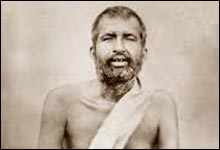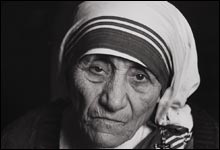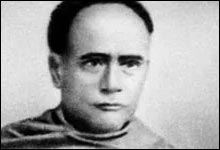GREAT INDIAN PERSONALITIES : Swami Vivekananda

"When this quite unknown young man of thirty appeared in Chicago at the inaugural meeting of the Parliament of Religions, opened in September 1893, by Cardinal Gibbons, all his fellow members were forgotten in his commanding presence. His strength and beauty, the grace and dignity of his bearing, the dark light of his eyes, his imposing appearance and from the moment he began to speak, the splendid music of his rich voice enthralled the vast audience of American Anglo-Saxons, previously prejudiced against him on account of his colour. The thoughts of this warrior prophet of India left a deep mark upon United States". ROMAIN ROLLAND.
Swami Vivekananda was born Narendranath Dutta, son of a well known lawyer of Calcutta, Biswanath Dutta and a very intelligent and pious lady, Bhuvaneshwari Devi in the year 1863. Naren learnt the epics and Puranas from his mother. Naren was an all rounder. He could sing, was good in sports, had a ready wit, his range of knowledge was extensive, had a rational frame of mind and he loved to help people.
Swami Vivekananda was a natural leader. Swami Vivekananda was a student of philosophy and the thoughts of the existence of God haunted his mind. It was in Sri Ramakrishna he found his guru. Vivekananda travelled extensively through out India. He was shocked to see the conditions of rural India-people ignorant, superstitious, half-starved, and victims of caste-tyranny. It pained Swamiji to see Indians imitating western ways and mannerisms. Later he would call out to the nation and say, 'Feel proud that you are Indians even if you're wearing a loin-cloth.'
Swami Vivekananda was not opposed to learning from the West, for Swami Vivekananda knew the Western people had some great qualities and it was because of those qualities that they had become so rich and powerful. He wanted India to learn science and technology from the West and its power to organize and its practical sense, but, at the same time retain its high moral and spiritual idealism.

When he went to Madras, young people gathered around him, drawn by his bright looks and inspiring talks. They begged him to go to the USA to attend the forthcoming Parliament of Religions in Chicago to represent Hinduism. Swamiji made a tremendous impression, first in the USA and then in England.
The press paid him the highest tributes as an exponent of India's age old values; overnight he became a great national hero in India. Suddenly it was brought home to the Indians that there must be something in Indian thought that Western intelligentsia felt compelled to admire. For the first time, they awoke to the richness of their heritage.
This was the starting point of Indian renaissance one hears about. It is in London in 1895 Swamiji met Margaret Elizabeth Noble, who later became Sister Nivedita. Swamiji saw in Margaret a great future in the work for India. What we wanted was 'not a man, but a woman, a real lioness' to work for the Indian women.
Swami Vivekananda described India's neglect of the masses as a national sin. Next to this was the sin of neglecting womanhood. Caste, was yet another sin. India's ethnic and religious pluralism did not worry him, for India had always sought her unity in love and respect for different sects and communities. It was Swamiji's hope that India would create a new social order and a new civilization by combining her best spiritual traditions with the latest advancement in science and technology. She would be rich both materially and spiritually.
Swami Vivekananda knew affluence was not enough, man had to be human too. He wanted India to set an example in this. Swamiji preached that "jiva is Shiva" i.e. every being is a part of God. Swami Vivekananda inspired Indians to "Arise, awake and stop not till the goal is reached". Swami Vivekananda worked for the suffering masses of India till his end. Swamiji left his body at an young age of 39 on the 4th of July 1902.


